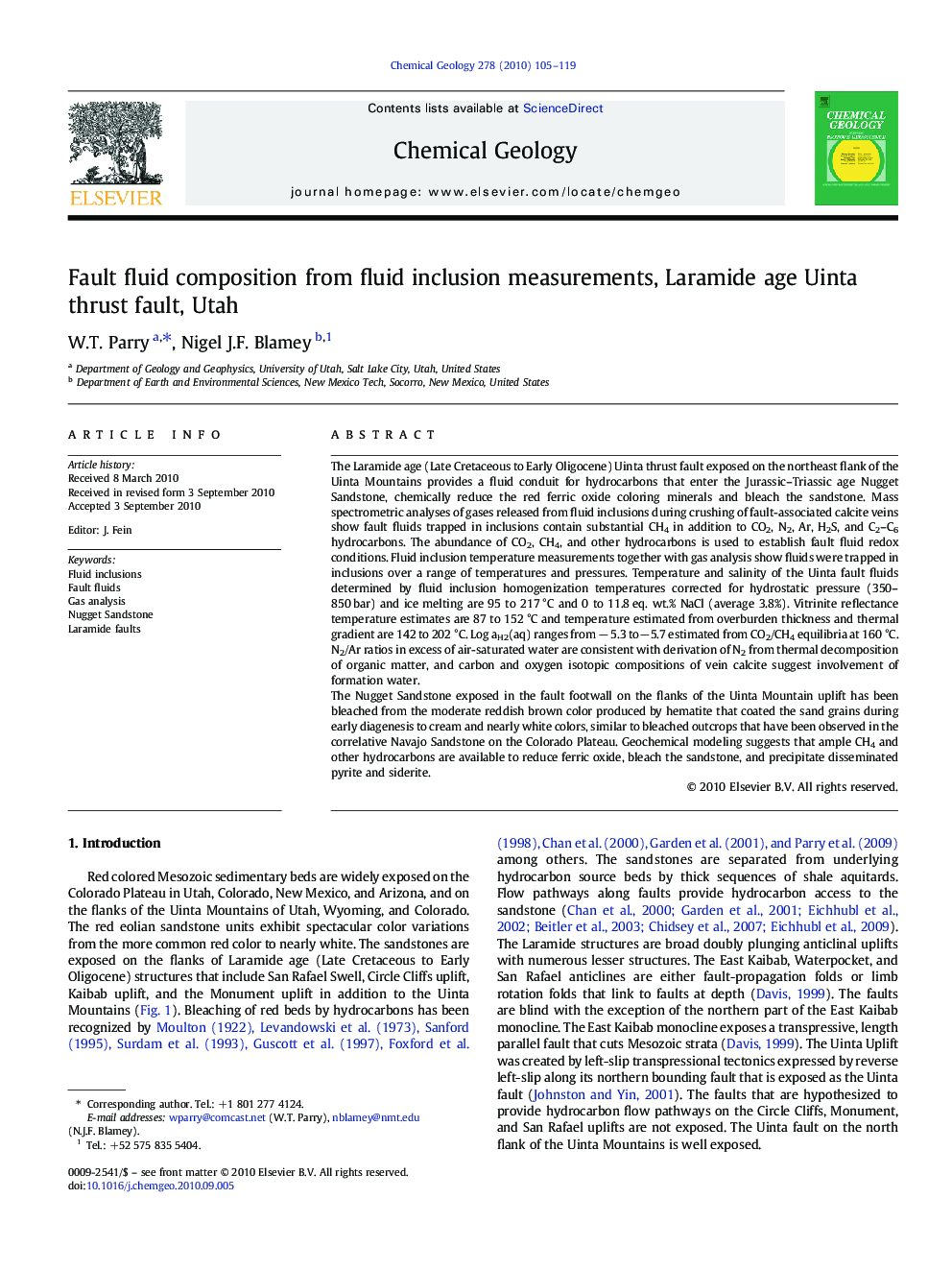| کد مقاله | کد نشریه | سال انتشار | مقاله انگلیسی | نسخه تمام متن |
|---|---|---|---|---|
| 4699991 | 1637680 | 2010 | 15 صفحه PDF | دانلود رایگان |

The Laramide age (Late Cretaceous to Early Oligocene) Uinta thrust fault exposed on the northeast flank of the Uinta Mountains provides a fluid conduit for hydrocarbons that enter the Jurassic–Triassic age Nugget Sandstone, chemically reduce the red ferric oxide coloring minerals and bleach the sandstone. Mass spectrometric analyses of gases released from fluid inclusions during crushing of fault-associated calcite veins show fault fluids trapped in inclusions contain substantial CH4 in addition to CO2, N2, Ar, H2S, and C2–C6 hydrocarbons. The abundance of CO2, CH4, and other hydrocarbons is used to establish fault fluid redox conditions. Fluid inclusion temperature measurements together with gas analysis show fluids were trapped in inclusions over a range of temperatures and pressures. Temperature and salinity of the Uinta fault fluids determined by fluid inclusion homogenization temperatures corrected for hydrostatic pressure (350–850 bar) and ice melting are 95 to 217 °C and 0 to 11.8 eq. wt.% NaCl (average 3.8%). Vitrinite reflectance temperature estimates are 87 to 152 °C and temperature estimated from overburden thickness and thermal gradient are 142 to 202 °C. Log aH2(aq) ranges from − 5.3 to−5.7 estimated from CO2/CH4 equilibria at 160 °C. N2/Ar ratios in excess of air-saturated water are consistent with derivation of N2 from thermal decomposition of organic matter, and carbon and oxygen isotopic compositions of vein calcite suggest involvement of formation water.The Nugget Sandstone exposed in the fault footwall on the flanks of the Uinta Mountain uplift has been bleached from the moderate reddish brown color produced by hematite that coated the sand grains during early diagenesis to cream and nearly white colors, similar to bleached outcrops that have been observed in the correlative Navajo Sandstone on the Colorado Plateau. Geochemical modeling suggests that ample CH4 and other hydrocarbons are available to reduce ferric oxide, bleach the sandstone, and precipitate disseminated pyrite and siderite.
Research Highlights
► Uinta fault fluids were trapped in fluid inclusions at 95–217 °C and 350–850 bar.
► Fault fluids contain CO2, CH4, and C2–C6 hydrocarbons.
► Fluids chemically reduce Fe in footwall red sandstone.
► Pyrite and siderite are precipitated as the sandstone is bleached.
Journal: Chemical Geology - Volume 278, Issues 1–2, 1 November 2010, Pages 105–119